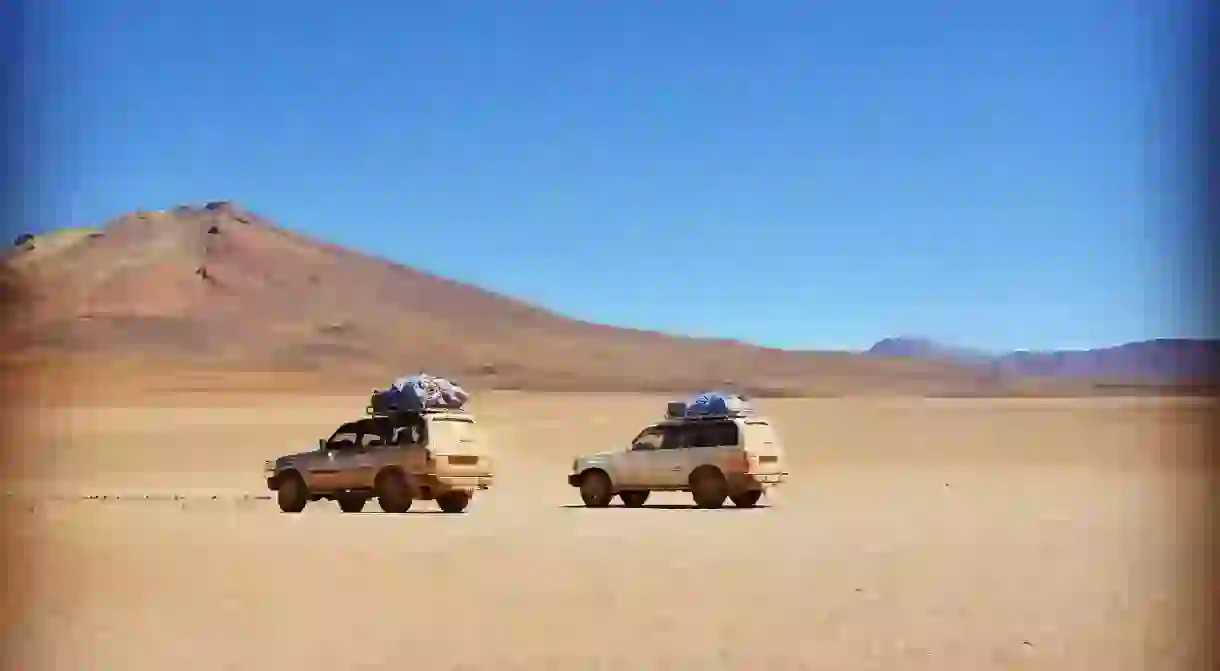10 Things you Didn't Know about Bolivia

Chances are there are plenty of things you don’t know about this seldom explored South American nation. A land of superlatives, Bolivia has countless ‘highest’ and ‘largest’ world records to its name, diverse culture and ethnicity, a turbulent political history and a belief system that is downright bizarre to the outsider. Read on to learn 10 new facts about the compelling country that is Bolivia.
Cochabamba has a bigger Jesus statue than Rio
We’ve all seen pictures on Facebook of a mate with outstretched arms, mimicking the pose of Christ the Redeemer – Rio’s signature giant Jesus statue. But did you know there’s one in Cochabamba that’s even bigger? The mammoth Cristo de Concordia (Christ of Peace) towers 112 feet (34 meters) above it’s pedestal, a good 13 feet (4 meters) higher than Rio’s celebrated icon. Unfortunately, Poland wins first prize with a statue some 6.6 feet (2 meters) taller than Cochabamba’s. They’re kind of cheating though, as Poland’s Jesus is wearing a crown.

La Paz is not the Capital City
Technically, Sucre is the capital city of Bolivia. The birthplace of Bolivia’s independence is home to the country’s supreme court and is still regarded as the official constitutional capital. Despite being home to the administrative, executive and legislative branches of government, La Paz is actually just a defacto capital. Therefore, all those tourism brochures proclaiming La Paz as the world’s highest capital are, in fact, incorrect.

Salar de Uyuni has the world's biggest lithium supply
Incredible diversity
The word Bolivia evokes images of a highland Andean nation, full of bowler hat wearing cholitas, llamas and stunning glacial mountains. In reality, a huge portion of the country lies within the humid Amazon basin and the inhospitable Chaco desert. Some 36 different languages are spoken throughout Bolivia, which was declared a Plurinational State in 2009 to recognize its ethnic diversity.

It has the highest lake in the world
The highest navigable lake anyway, which basically means not counting the small amounts of water that get trapped in the craters of dormant volcanoes. Lake Titicaca is stupendously large, incredibly old and astonishingly high, at 12,500 feet (3812 meters). This awesome natural wonder also has amazing Pre-Colombian history and is a great place to chill out or go hiking for a couple of days.

It once had an ocean
Bolivia wasn’t always landlocked. Before the War of the Pacific, it had an ample coastline spanning hundreds of miles in what is now northern Chile. A dispute over Guano (bird poo), potassium nitrate and taxes led to an all out war with Chile, resulting in Bolivia losing its entire coast. Bolivia still cries foul over this century old war and is taking the matter to the international court in The Hague, Netherlands.
Early indigenous inhabits were seriously ancient
The Incas are renowned for having the largest empire in the Americas and building breathtaking cities like Peru’s Machu Picchu. But did you know Bolivia’s Tiwanku people pre-date even them? No one is sure exactly when, but most archaeologists agree that the Tiwanaku empire evolved around the birth of Christ, a good 1,300 years before the Incas. These weren’t just primitive nomadic people either; the Tiwanku built a massive city of 70,000 inhabitants and mastered advanced agricultural techniques.

It has had a lot of political instability
Bolivia hasn’t always been the peaceful country that tourists can safely visit today. Throughout its history, the nation has suffered through a series of dictators, violent conflicts, human rights abuses, hyperinflation and general political and economic instability. The country has had 80 different presidents in under 200 years, many of whom lasted just a few months or even days.

The clock on the Legislative Palace runs backwards
Bolivians believe some pretty weird stuff
From burying llama fetuses under houses, to pouring alcohol over cars as a blessing, to punching your friends in the hopes of a good harvest; there are plenty of weird and wonderful beliefs that Bolivians hold dear to this day. This predominately catholic country still retains much of its indigenous belief system which makes for some pretty interesting examples of modern day syncretism.














